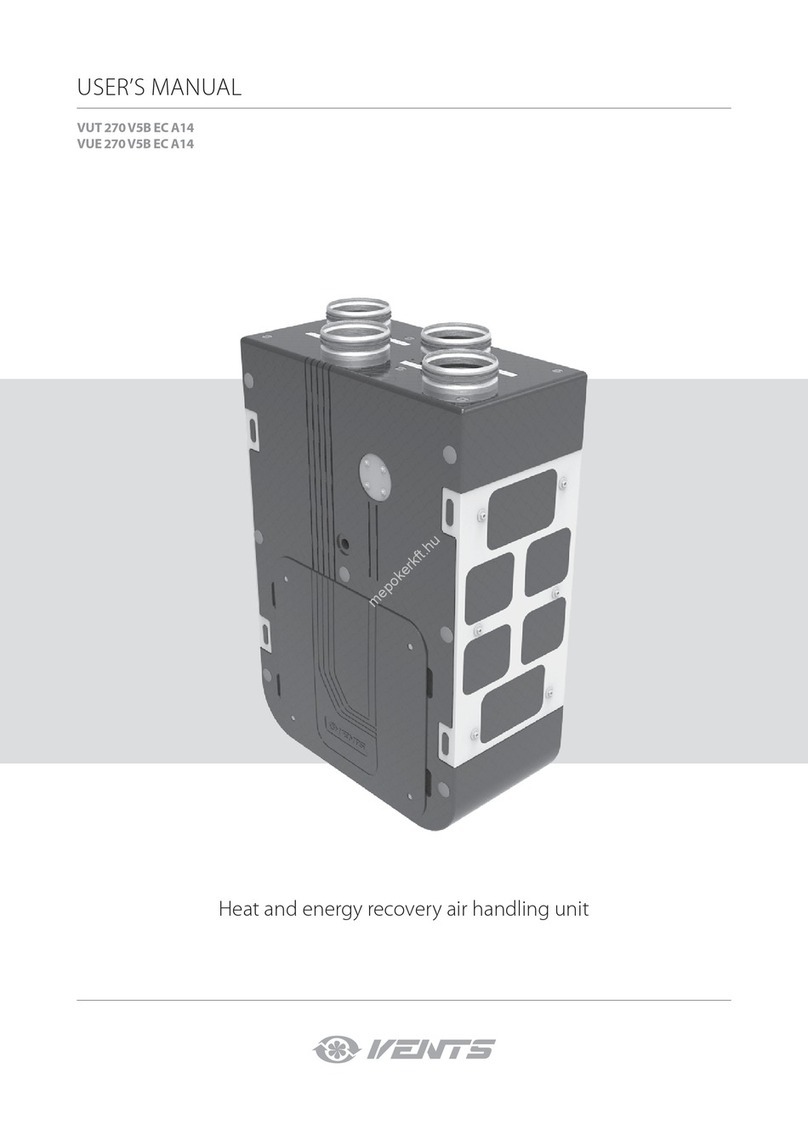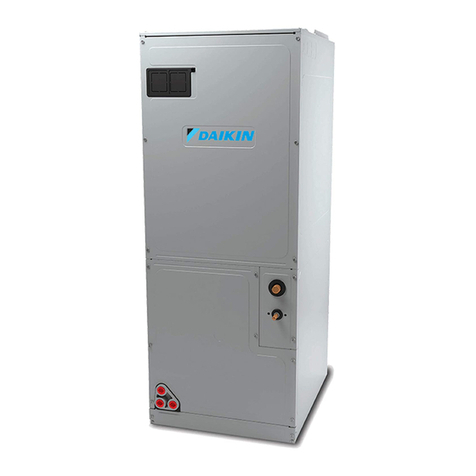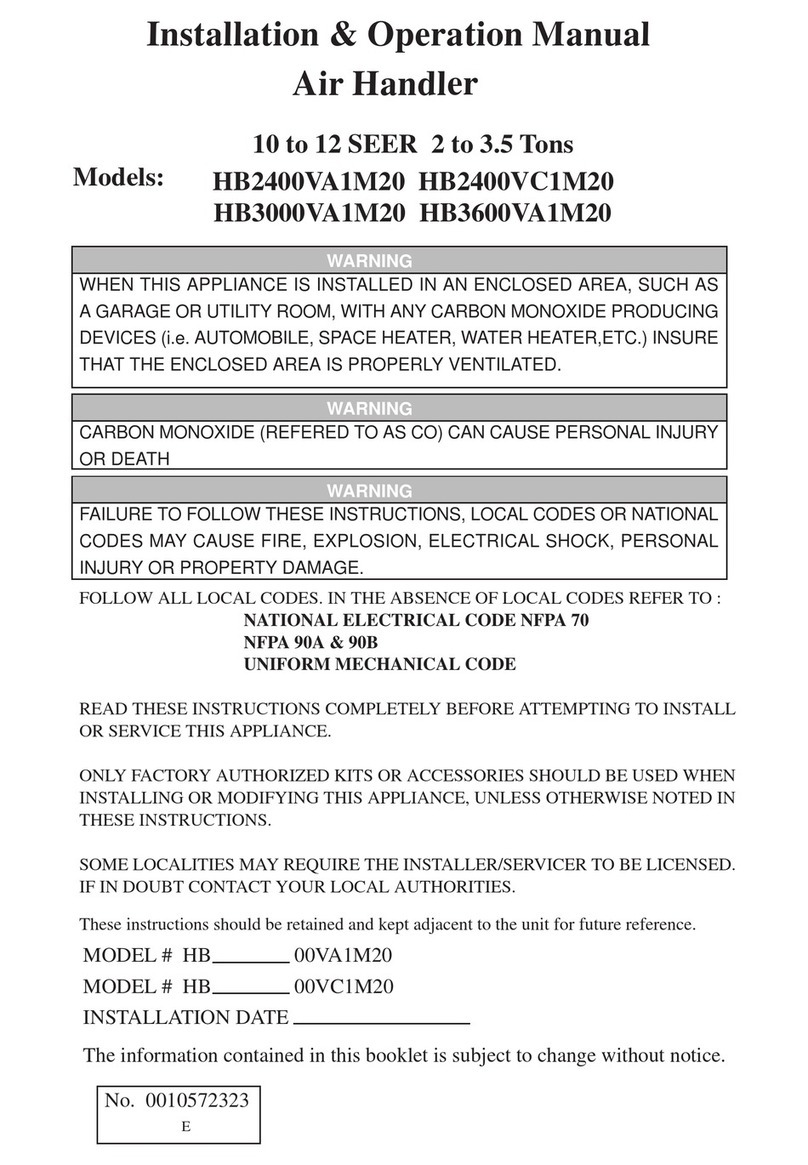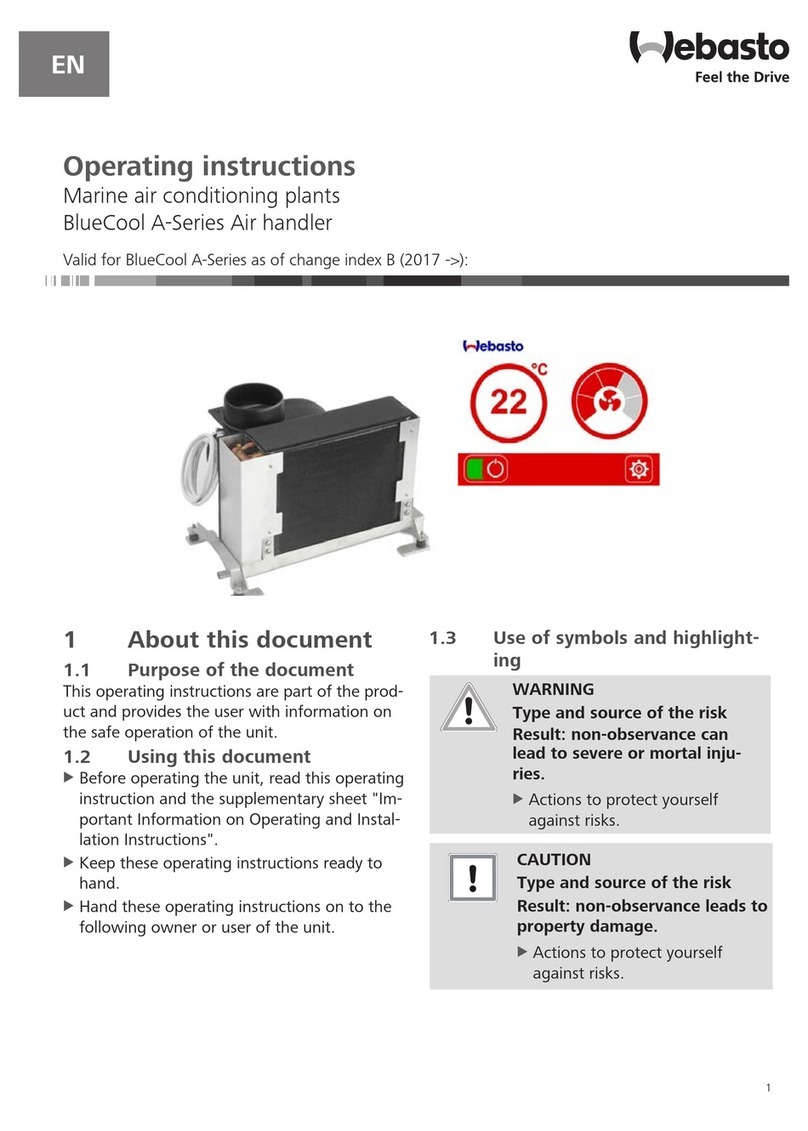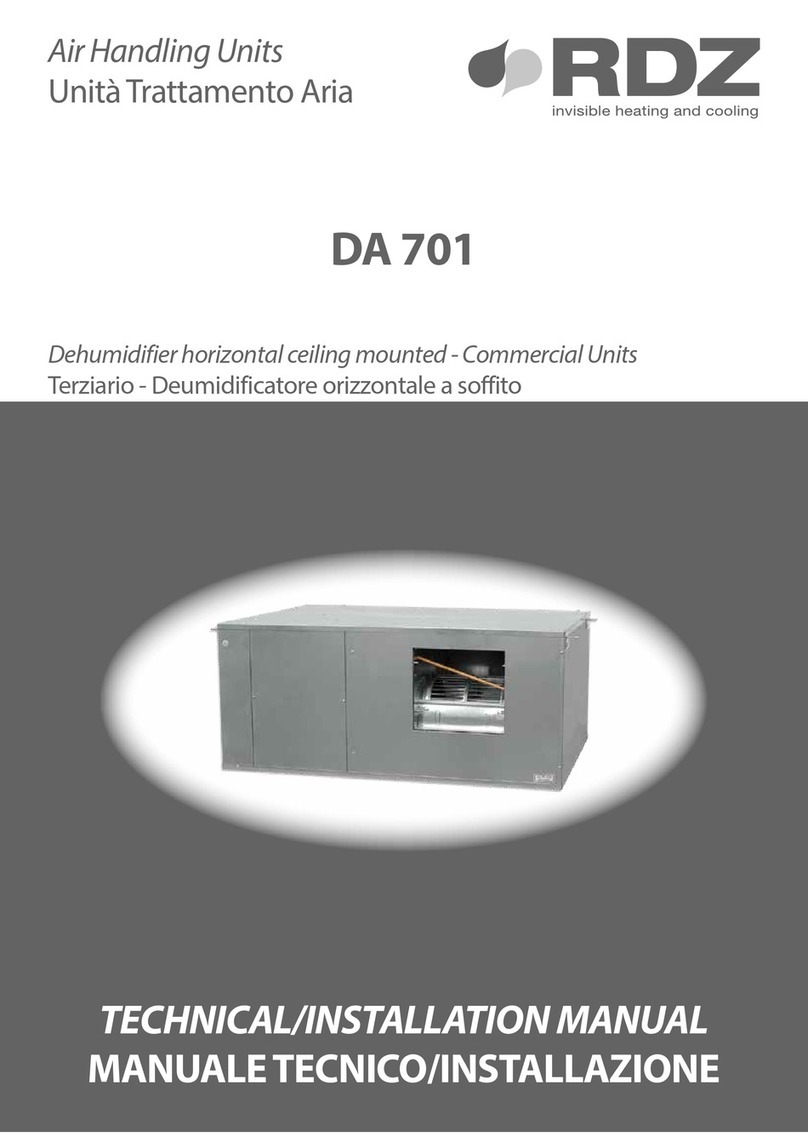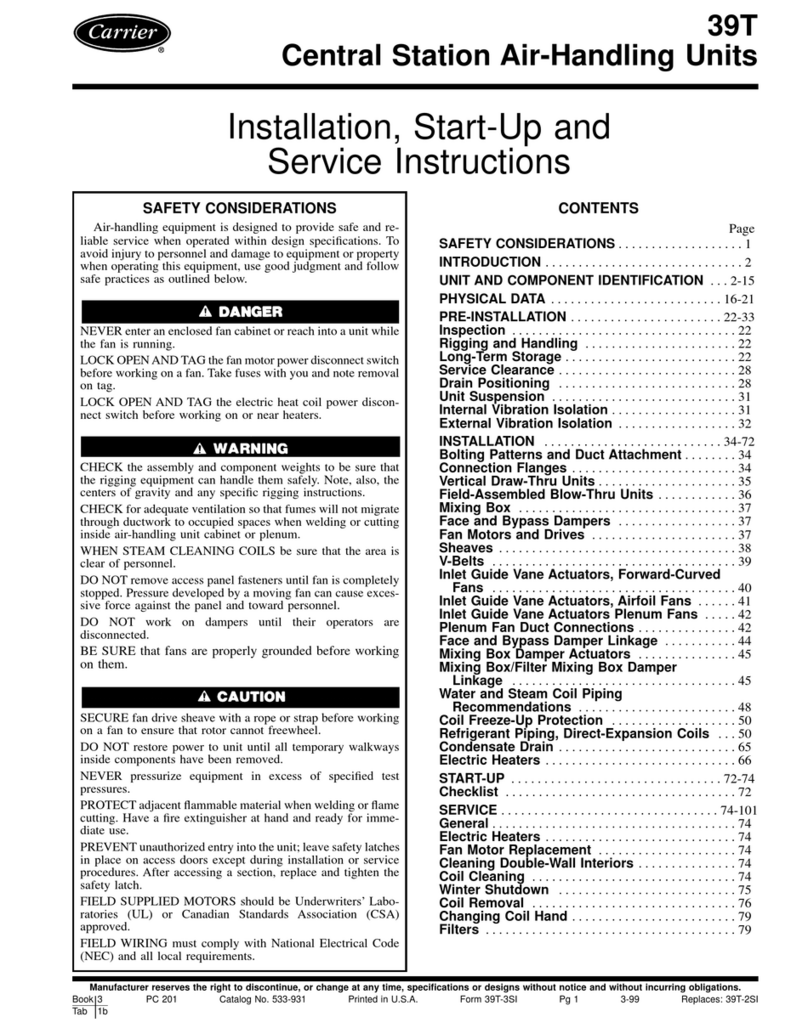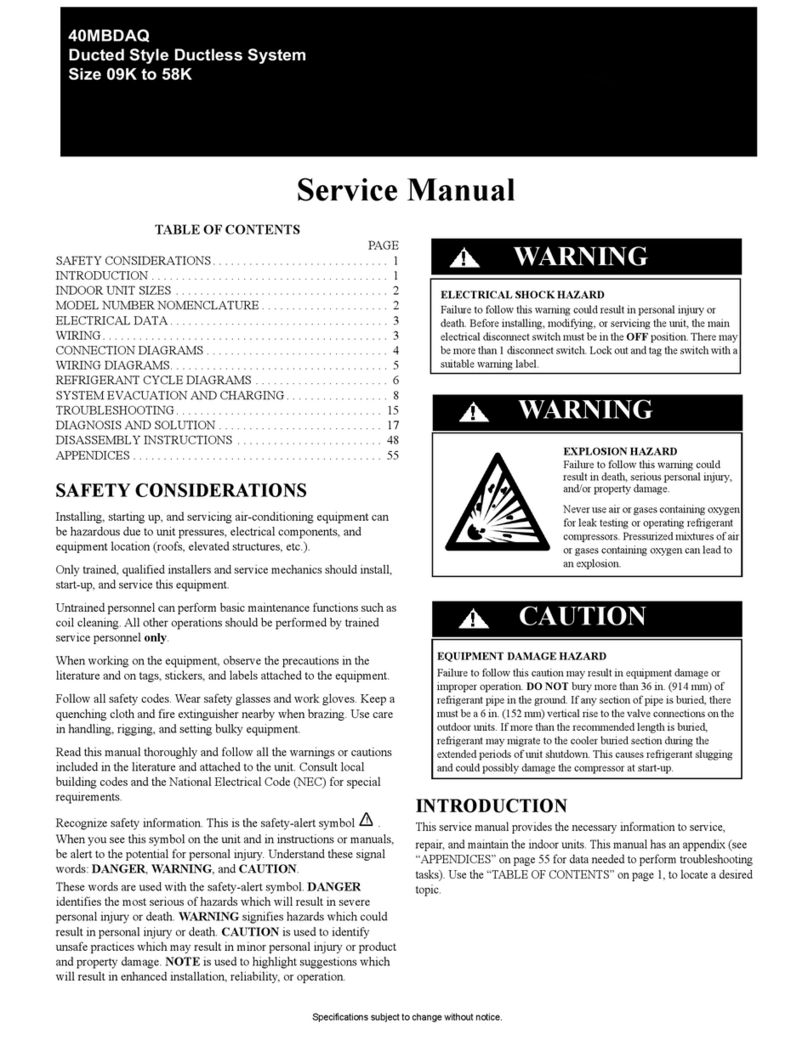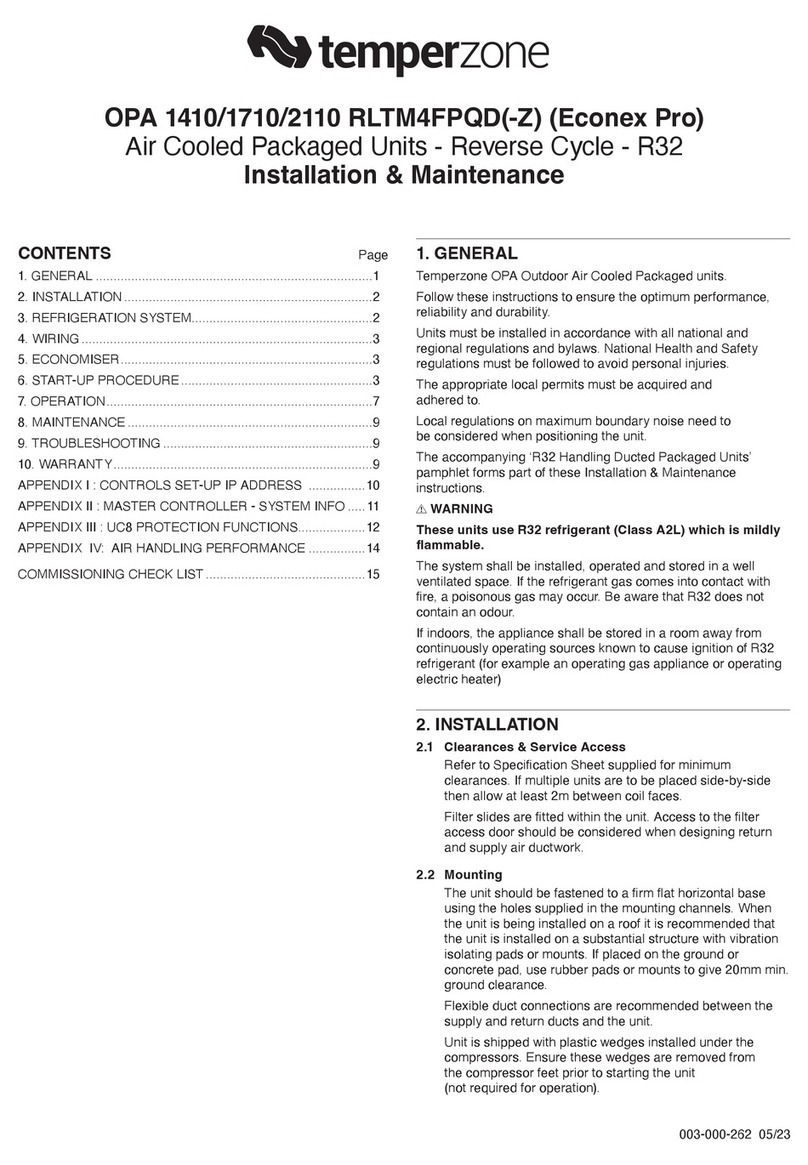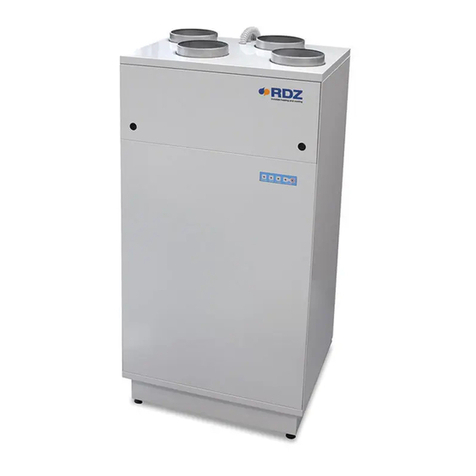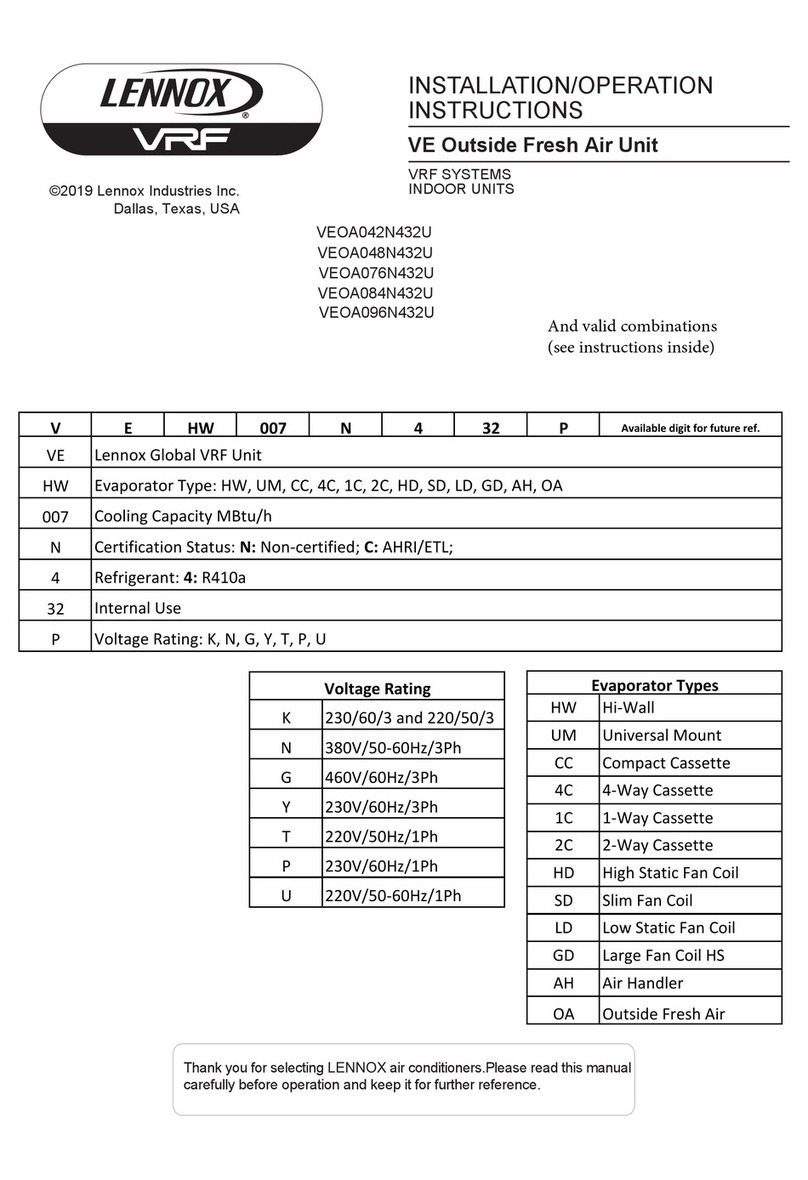
TABLE OF CONTENTS
SECTION 1: Air Handler Safety.............................................. 1
1.1 Description of Operation............................................... 1
1.2 Inspection and Setup ................................................... 1
1.3 Safety Labels and Their Placement ............................. 2
1.4 California Proposition 65 .............................................. 2
1.5 Label Placement .......................................................... 3
SECTION 2: Installer Responsibility ..................................... 6
2.1 Wall Tag ....................................................................... 6
2.2 Corrosive Chemicals.................................................... 6
2.3 National Standards and Applicable Codes .................. 7
2.4 Required Equipment .................................................... 7
SECTION 3: Critical Considerations ..................................... 8
3.1 Required Clearances to Combustibles......................... 8
3.2 Purge of Supply Duct ................................................... 9
3.3 Hardware ..................................................................... 9
SECTION 4: National Standards and Applicable Codes ... 10
4.1 Gas Codes................................................................. 10
4.2 Installation Codes ...................................................... 10
4.3 Aircraft Hangars ......................................................... 10
4.4 Parking Structures and Repair Garages .................... 10
4.5 Electrical .................................................................... 10
4.6 Venting....................................................................... 10
4.7 High Altitude .............................................................. 10
SECTION 5: Specifications .................................................. 11
SECTION 6: Liftingan Air Handler ...................................... 17
6.1 Lifting an Air Handler ................................................. 17
SECTION 7: Roof Curb ......................................................... 19
7. 1 R o o f C urb Assembly and Installation ......................... 19
7.2 Air Handler Mounting to Roof Curb ............................ 20
SECTION 8: Upright Stand ................................................... 22
8.1 Upright Stand Installation........................................... 22
8.2 Attaching Air Handler to Stand...................................22
SECTION 9: Legs .................................................................. 24
9.1 Leg Mounting............................................................. 24
9.2 Leg Mounting - Horizontal Air Handler
(2005 - 2030) ............................................................ 24
SECTION 10: Indoor Suspension Mounting- Horizontal
Air Handler .................................................. 26
10.1 Suspension Kit Assembly and Installation ............... 26
SECTION 11: Filter Section .................................................. 29
11.1 Filter Section (2005) ................................................. 29
11.2 Filter Section Assembly (2010 and 2010B) ...............30
11.3 Filter Section Assembly (2020 and 2030)................. 34
11.4 Filter Section Support Assembly............................... 41
11.5 Filter Section Installation - Horizontal Air Handlers... 43
11.6 Filter Section Installation - Upright Air Handlers ....... 43
SECTION 12: Inlet Hood ....................................................... 44
12.1 Inlet Hood Assembly (2005) .................................... 44
12.2 Inlet Hood Assembly (2010 and 2010B) ................... 45
12.3 Inlet Hood Assembly (2020 and 2030) .................... 54
12.4 Inlet Hood Installation .............................................. 64
SECTION 13: Dampers ......................................................... 65
13.1 Discharge Damper...................................................66
13.2 Inlet Damper ............................................................67
SECTION 14: Discharge Heads and Splash Plates ............69
14.1 One-Way and Three-Way Discharge Head
Installation ................................................................ 69
14.2 Splash Plate Installation........................................... 70
SECTION 15: Duct Considerations...................................... 72
15.1 Inlet Duct Work ........................................................ 72
15.2 Return Duct Work .................................................... 72
15.3 Discharge Duct Work ............................................... 72
SECTION 16: Gas Piping.......................................................74
16.1 Gas Manifolds...........................................................74
16.2 Gas Piping and Pressures ........................................74
16.3 Gas Manifold Venting................................................74
16.4 Gas Piping ............................................................... 77
16.5 Pressure Test Ports.................................................. 77
16.6 Line Pressure Test - Leak Testing............................ 77
SECTION 17: Electrical......................................................... 78
17.1 Wiring and Electrical Connections............................ 78
17.2 Remote Panel........................................................... 78
17.3 Motor Current Draw.................................................. 78
17.4 Control Current Draw................................................ 78
17.5 Safety Systems......................................................... 78
17.6 Additional Control Wiring .......................................... 90
17.7 Carbon Dioxide Interlocks ........................................ 97
17.8 Control Options ........................................................ 97
17.9 Optional Exhaust Motor Starters, Variable
Frequency Drives.................................................. 103
17.10 Disconnect Fuse Sizing ........................................ 106
SECTION 18: Sequence of Operation ............................... 108
18.1 Air Handler Configuration ...................................... 108
18.2 HVAC Remote Panels and Panel Options ..............110
18.3 Basic Air Handler Sequence of Operation..............112
SECTION 19: Start-up Procedures .....................................116
19.1 Installation of Recirculating Air Handler..................117
19.2 Mechanical .............................................................117
19.3 Electrical .................................................................118
19.4 Airflow.....................................................................118
19.5 Gas Piping and Initial Pressure Settings.................119
19.6 Safety Shut Off Valve Check.................................. 121
19.7 Temperature Control System Calibration ............... 121
SECTION 20: Maintenance................................................. 124
20.1 General.................................................................. 125
20.2 Unit Exterior........................................................... 125
20.3 Blower Section....................................................... 125
20.4 Manifold and Controls............................................ 128
20.5 Burner.................................................................... 128
20.6 Optional Equipment............................................... 130
SECTION 21: Replacement Parts ...................................... 131
SECTION 22: Troubleshooting.......................................... 136
22.1 Initial Checks ......................................................... 137
22.2 Motor and Blower .................................................. 137
22.3 Burner.................................................................... 138
22.4 Temperature Controls ............................................ 139
22.5 A1014 Amplifier - Field Checklist ........................... 140
22.6 A44 Amplifier - Field Service Checklist.................. 142
SECTION 23: RAPID®2000-Series Start-Up Procedures. 145
SECTION 24: The RAPID®2000-Series Warranty............. 147
